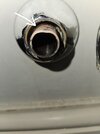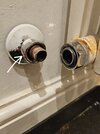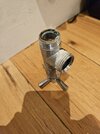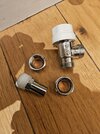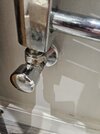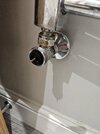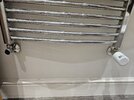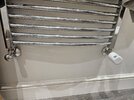Hi All
I just tried to switch my vertical radiator from a traditional valve to a TRV. I bought a 15mm TRV. However, upon going to switch the valve, I have come across a few issues:
1). The pipe leading to the wall is 15mm, however, the nut behind it is too big to lock onto the new valve.
2). I cannot work out how to remove / replace that nut, as there is a bulge in the pipe (deliberate) and it sits behind that, presumably to keep it secure for tightening.
3). The valve going into the radiator appears to be 15mm internally, but the outside is more like 22mm, therefore, my 15mm valve will not fit over the top of it, so I can't screw it on that side either.
I've attached pictures of the original valve, the new valve and the pipes (including the bulge mentioned in point 1).
If anyone is able to help me with a solution for these points that would be amazing!
Thanks if you can.
I just tried to switch my vertical radiator from a traditional valve to a TRV. I bought a 15mm TRV. However, upon going to switch the valve, I have come across a few issues:
1). The pipe leading to the wall is 15mm, however, the nut behind it is too big to lock onto the new valve.
2). I cannot work out how to remove / replace that nut, as there is a bulge in the pipe (deliberate) and it sits behind that, presumably to keep it secure for tightening.
3). The valve going into the radiator appears to be 15mm internally, but the outside is more like 22mm, therefore, my 15mm valve will not fit over the top of it, so I can't screw it on that side either.
I've attached pictures of the original valve, the new valve and the pipes (including the bulge mentioned in point 1).
If anyone is able to help me with a solution for these points that would be amazing!
Thanks if you can.


